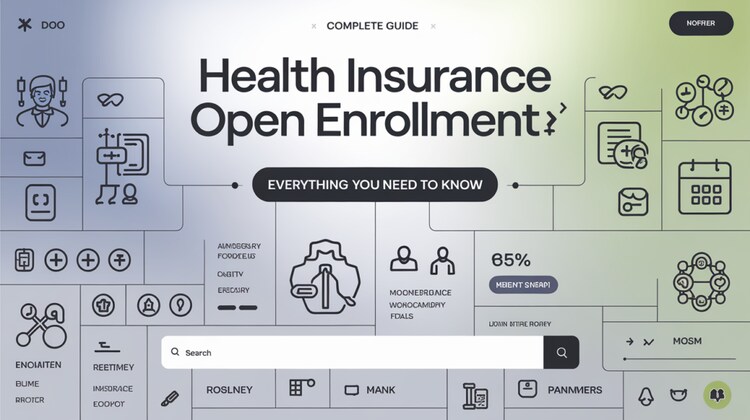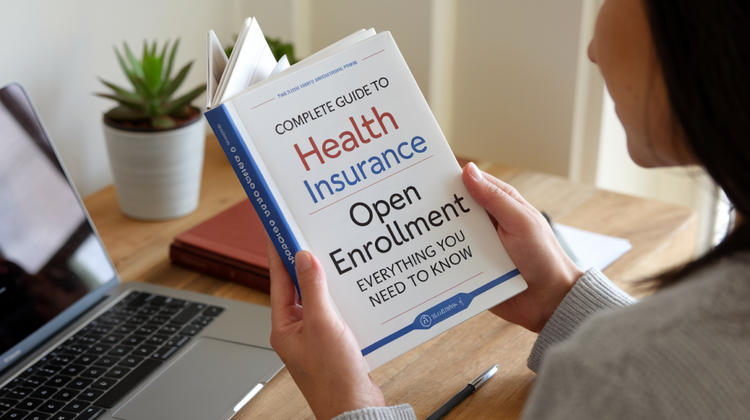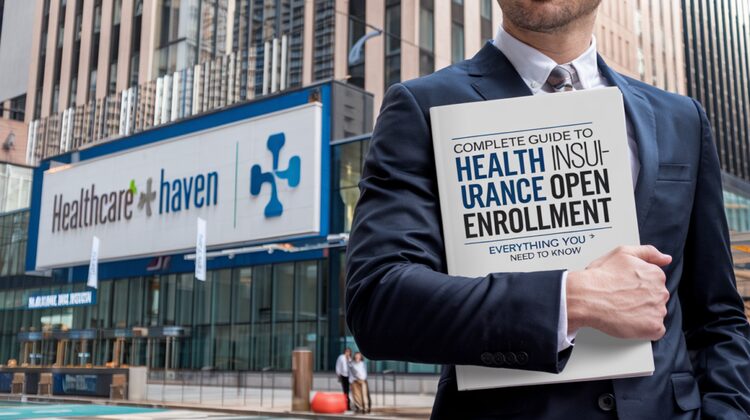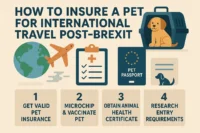Complete Guide to Health Insurance Open Enrollment
Published: 28 Sep 2024
Introduction
What is Health Insurance Open Enrollment
Open enrollment is the period which has been established by an organization whereby the members or employees of the organization can participate in signing up for, renewing or changing their health insurance plans for a given number of days every year. It is the time frame in which any alteration to one’s health insurance plan can be made and failure to meet this period implies that one will have to wait for another calendar year period, provided that there are no reasons to qualify for a special enrollment period. This comprehension often depicts how important this time is while managing to get appropriate health insurance.
Why Open Enrollment is Significant
The Role of Open Enrollment in Health Insurance Coverage
Health insurance open enrollment is very important in that it provides a limited period whereby one can change the existing plans or come up with new ones. Hence, people are given the opportunity to assess whether the available plan is enough to take care of their health needs and that of their family within the budget. It is possible that without such periods, one would be consigned to a plan which may not be adequate in the coming year.
In addition, if one does not take advantage of such a plan and instead opts to join the plan during the open enrollment period, chances are that one will themselves be penalized or remain without coverage in the year that is to come. Hence, appreciating the value and meaning of open enrollment assists you to be able to make the right decisions at the right time.

Important Dates Regarding the Care Enrollment For 2024
What are the enumeration dates for open enrollment?
To purchase health insurance, one has to wait for the open enrolment period which is expected to be probably in the early part of November and end around the middle of December. These dates may vary slightly based on your state or whether you are purchasing insurance through an employer or on oneself through the health insurance marketplace.
However, in states such as Texas, North Dakota and Wisconsin, extensions on the application were offered as well. Go to your state’s marketplace as well for these. If these deadlines are missed, then you will have to obtain a health plan till the next open enrollment period unless you are entitled to a special enrollment period.

Who is covered for the Open Enrollment in Health Insurance?
Open Enrollment Determined
The open enrollment period is the best period for every individual without health insurance cover or the one who wants to change their plan. Whether you are employed, unemployed, self-employed, or part of a family health plan, you are elugible to sign up for Health coverage during this time. However, there are some key exceptions:
- Medicare: For Medicare beneficiaries, the time frames for your enrollment are not the same as the open enrollment for health insurance.
- Employer-Sponsored Plans: If you are enrolled in a health insurance scheme via your employer, there may be a separate period for enrollment within your organization. It is very important to check with your employer when their open enrollment starts and ends.
- By understanding the open enrollment procedures including when it opens and for whom it applies, you can be able to know when you need to seek health coverage so as to avoid any gaps.
How to Get Ready for the Enrolment Period
What Information Should Be Considered When An Individual Wants To Enroll Into A Health Plan
Preparation is critical in the management of this period. Before this period starts when you are preparing for activities, make sure that you study your last health plan and explain the upcoming situations which will change your course of treatment. Here is what I would recommend you do:
Evaluate Your Healthcare Needs: If you had to look back to the previous year, how many doctor visits did you make? How many times did you use pharmacotherapy in many prescription drugs? Knowing your health needs helps determine the level of coverage you require.
| Aspect | Details |
|---|---|
| What is Open Enrollment? | A period during which individuals can enroll in or make changes to their health insurance plans. |
| Open Enrollment Period for 2024 | Typically from November 1, 2023, to January 15, 2024 (specific dates may vary by state). |
| Eligible Actions | Enroll in a new plan, switch plans, or update your current plan details. |
| Late Enrollment | If you miss the deadline, you may need to wait until the next open enrollment period unless you qualify for a special enrollment period (SEP). |
Look for Information on Any Premiums and Coverage Changes: When a new year dawns so many health plans will make adjustments to their premiums or coverage options for their members. If you receive any notifications from your current provider regarding changes, kindly examine them.
Collect Information That Will Be Necessary: Personal details such as income, household size, or tax details will be needed in the process of applying for health insurance through the marketplace.
These steps will assist you in obtaining the necessary data that will help you in selecting the very best health insurance policies.
Health Insurance Plans obtainable during Open Enrollment
Health Insurance Plan options Comparison
When it comes to purchase a health insurance plan, there are so many things that one has to look for. During the open enrollment period, one can select from the following kinds of plans if at all they are offered:
More formal settings which the vast majority of America children first get health insurance as this is an HMO.
Preferred Provider Organization or PPO: This kind of plan allows covered member greater access to such Health resources, but at increased premium.
Exclusive Provider Organization or the EPO: Like HMOs where certain healthcare services are not accessible without a certain referral from other healthcare specialists like you do not have to get a referral in order to see a specialist.
High Deductible Health Plan: Less monthly cost but will have to accrue higher out of pocket medical expenses prior to fully contributing.
By weighing of these options, you are capable of choosing the one that satisfies your health care as well as the economic aspect.
How to Compare Health Insurance Plans in 6 Steps
Summary of Points to Remember While Safeguarding the Plan Against Low premiums.
While comparing health insurance plans, it is not advisable to simply look for the lowest premium rate. Other considerations either affect the cost or limit the indemnification you are entitled to cover, including:
Deductibles: This is the cost that you incur before your insurance will start to cover the expense of both services and treatments.
Co-pays and Co-insurance: It is the share of the healthcare cost on the individual.
Out-of-Pocket Maximums: This is the total amount you will spend on services that are provided for you in any given year of coverage.
Provider Networks: Make sure that your favorite doctors and hospitals are part of the plan you are taking.
Taking these factors into account can help you find the plan that offers the most adequate and comprehensive cover for your money.

Buying Health Insurance Through The Marketplace In 4 Simple Steps
Everything You Need to Know About the How-To Section of the Marketplace with Respect to Affordable Plans.
The health insurance marketplace, also known as exchange, is the center through which health insurance plans can be evaluated and purchased. It is likely that this is where you will go for coverage if you are not in an employer-sponsored plan. The following is how to do it:
- Create an Account: Begin with an account opening on either Healthcare.gov or your state’s marketplace website.
- Enter Personal Information: Supply information which includes the size of the household, income and whether you have any health cover.
- Compare Plans: Check the options available to you with regard to premiums, deductibles and coverage networks.
- By using the marketplace, you can make comparisons of different plans and this can assist you in identifying cheap health insurance.
Open Enrollment Concerns Things to Do for a Health Plan to Avoid Some Problems
Pitfalls When Enrolling in a Healthcare Coverage Plan
When selecting health insurance during an open enrollment period, there are ideas one should not ignore because they usually contribute to under insurance or over insurance for example paying premiums that are above what an individual would have paid for. Here’s what to avoid:
The Only Consideration is the Premium: Faced with a low premium, you may be tempted to enroll. However, you should note that this may go along with high copays and other out of pocket expenses for services that may be offered only on a limited basis.
Neglecting to Check on Networks: Choosing a health insurance plan without checking to see what healthcare providers are in the plan network can mean massive out of pocket costs.
Ignoring the Small Letters: You should never make the mistake of buying a plan and ignoring the terms and conditions of coverage, especially the deductible amounts, other payments, what is insured and what is not insured.
By avoiding these mistakes, you can ensure that you choose the most appropriate coverage for the health requirements that you have.
| Consideration | Details |
|---|---|
| Evaluate Your Needs | Assess your medical needs and budget to determine the best plan for you and your family. |
| Check Plan Networks | Ensure your preferred doctors and hospitals are included in the plan’s network. |
| Understand Costs | Review premiums, deductibles, co-pays, and out-of-pocket maximums to avoid surprises. |
| Use Subsidies | Check eligibility for subsidies or tax credits that can lower your premiums and costs. |
| Special Enrollment Periods | Qualify for SEP due to events like marriage, childbirth, or job loss, allowing enrollment outside open enrollment. |
Procedures to Using Any Health Insurance Coverage
How to Go about Registering with any Health plan Covering
Obtaining a health insurance cover requires one to be ready to utilize the fixed period known as the open enrollment when it occurs. It is because an approach on how you can enroll up in the insurance cover is in a way simple and not difficult as long you are systematic and pay attention to details. Here’s how to do it properly:
Step 1: Analyze Your Current Health Insurance Policy
Before you go out hunting for a new plan, you must be ready to examine your current health insurance policy. Do you think it serves your medical needs? Are there better offers in terms of premiums or coverage that would make you consider switching providers? People tend to passively carry forward their health plans without questioning if the said health plan is still the most appropriate and affordable given their current state of health and finances.
Step 2: Search for Health Plans to Cover Your Needs
Depending on the way you obtain your health cover, enter a health insurance marketplace or a health cover portal provided by your employer. There are many different plans available on the marketplace which can be sorted according to important metrics such as monthly premiums, deductibles and co-pays and the most that the client will pay out of pocket. The quote provided will also take into account the subsidies that you qualify for.
Update this section recently as it concerns employer-sponsored plans. Call the HR department and inquire if there are any changes to coverage and premiums for the coming year. However, be sure to explore all the coverage options, not just the one that you are already on.
[wptb id=985]
Step three: Assess plans against your requirements and budget
Right before making a decision, it is important to make sure you have compared all the plans fully covering all their benefits and drawbacks. When comparing health plans, the following should be taken into account:
Monthly Premiums: This is the fixed charge that a customer pays for coverage on a monthly basis.
Deductibles: The amount that an individual must pay before the insurer makes any payment.
Co-Pays and Co-Insurance: These are costs that a patient meets when attending a physician or a specialist.
Out-of-Pocket Maximums: This figure will be the out of pocket maximum amount you will meet on all covered services in a year under which, the insurer will be responsible to meet all the remaining costs.
Understanding these dimensions aids you in finding the cheapest plan may it be for an individual or a family with dependent members.

Step 4: Look for provider networks
Make sure that the health plan you have selected contains your most preferred doctors, hospitals and specialists within its network. For HMO and EPO Plans, you are virtually required to use in-network doctor and other service providers while PPO Plans do not have that restriction but most times are relatively more costly. Looking into networks is very essential especially in cases where you have a chronic illness that requires you to see the same doctors or go to the same places on an ongoing basis.
Step 5: Move on to the conclusion of the enrollment procedure
As soon as you have selected a suitable health plan, you should go ahead and fill out the enrollment application. Application submission via Healthcare.gov or using a state-funded health exchange center is required for marketplace health insurance plans. You will have to give personal information detailing your income, size of family unit and even the social security number.
In the case of employer-sponsored health plans, the usual step may be to fill out the forms from human resources or log onto the health insurance plan website and complete an online enrollment.
Step 6: Chubby pockets for pay for the first premium
The last thing to do after selecting a health plan and spending a long time filling out the forms for health insurance enrollment is to pay the first premium. This, in essence, is confirming enrollment and guarantees that one will be covered starting January one in the year 2024 provided they have enrolled during the open health insurance enrollment period. Ensure one adheres to the payment schedule to avert the struggle of being without health cover.
Special Enrollment Period Vs. Open Enrollment
The difference between two enrollment periods in one sentence.
The open enrollment period is often mistaken with the special enrollment period by most people. Knowledge of the differences will help to ensure that the most important times of joining a health plan or changing the current health insurance plan are not missed.
Open enrollment is defined as the limited period of time each year usually set aside for a person to enroll or change his or her health insurance plan without having to provide further explanations. The open enrollment duration for the year 2024, for instance, runs from November 1, 2023 to December 15, 2023 for most of the states in the U.S

In contrast, the special enrollment period does allow for enrollment but not within the usual deadlines unless certain circumstances such as qualification life events occur. These include:
Marriage: In the event that you are married, there occurs a special enrollment period meant for adding a spouse onto the health plan.
Birth or Adoption: An adding of a child to the family qualifies for special enrollments.
Loss of Other Coverage: If coverage from an employer is no longer in place, a new one can be bought from the market place.
Such life changes enable you to choose or change your health plan within a period of two months from the date of such life changes. However, it is important to note that even so, if you do not have a qualifying event, all of the same changes will not be able to be made until the next open enrollment period.
What Should You Do About Missing Open Enrollment
Enrollment Deadlines – What Do You Do Going Forward
Many people get stressed at the thought of missing the open enrollment period, however, it is not the end as there are still options left even to obtain coverage. Depending on the situation, you may be eligible for some other types of coverage. Below it is explained what to do if you miss that deadline:
Special Enrollment Period
If you missed the open enrollment period, the most widespread method of getting coverage still remains the special enrollment period. as stated life changing events such as marriage, giving birth or losing your job allow you to be eligible for this period which gives you 60 days in which to get a new plan to embrace.
Medicaid or CHIP
Another alternative is Medicaid or the children’s health insurance program CHIP. These programs provide comprehensive health insurance at little or no cost to lower income individuals and families. The good thing is that, unlike medicaid and CHIP, there is no specific time period whereby applicants are restricted from seeking the program for the rest of the year. This is determined by the level of income and the number of people in the household.
Short-term health insurance is something that many of us often have to resort to.
For those who do not meet the criteria for Medicaid or CHIP programs, or do not have a special enrollment period, short-term health insurance plans could be one of the options. Such plans do not have to comply with the Affordable Care Act (ACA) and because of that fact, they may be of minimal coverage or exclude pre-existing conditions. Nevertheless, they can be helpful in bridging the gap until the next round of open enrollment comes.
These alternatives provide relief that you can still have health cover for the rest of the year even when you are unable to make registration during the given open enrollment time.

Tutorial for Those Who Want to Have Coverage under Special Enrollment
Events that Call for Special Enrollment
Special enrollment is additional enrollment that allows a person to obtain a health insurance policy or change his/her policy portfolio outside of the open enrollment period which occurs once a year. However, in order to qualify for this, one must go through some life events which alter in a great way the way you view health insurance. Few of the reasons people rush for special enrollment are such as;
Loss of Health Coverage
In case you suffer a job loss and you lose health coverage or if you have received health coverage on a COBRA but that has now expired, or if under your parents’ plan but now you are turning 26 years old such a situation triggers special enrollment. This to a great extent it cut across reasons people take up insurance cover out of the designated one time in a year.
Marriage or Divorce
In the case of marriage, you can enroll the spouse that you marry or take the plan of the spouse that you have married. On the other hand, in case of divorce this may require you to take the spouse out and take individual coverage and also it comes under a special enrollment period.
Having a Baby or Adopting a Child
Like was mentioned above giving birth to a new baby also qualifies as a life event. There is the benefit of including the new born baby or an adopted child to your health plan with the expectation of having the child’s health needs taken care of.
Moving to a New Location
Changes of address say to another state or even a new zip code can change your health insurance plan especially if that particular health insurance plan does not cover the new area than the individual is moving into. This makes one eligible for a special enrollment period where one is allowed to take up a new plan based on where the person is.
By knowing which life events trigger special enrollment, you are able to take advantage of such opportunities and either get or change the health insurance plan that you have at all times when there is a need to.
FAQs
What is health insurance open enrollment?
Open enrollment is the set time during the year whereby people are able to enroll in, renew or switch the health insurance coverage that they currently have.
When is the period of excepted application for health insurance in 2024?
The period of open enrollment for health insurance for the year 2024 begins on November 1, 2023 and ends on December 15, 2023 in most states.
What if the open enrollment has ended?
If you have missed the open enrollment period, you might be entitled to an open enrollment period if there are life-changing circumstances like being married, adopting a child or losing a job.
What is the difference between open enrollment and special enrollment?
Open enrollment is ‘the usually’ once a year time in which everyone is free to apply for health insurance, on the hand, special enrollment simply refers to applying for health insurance outside of enrollments periods.
Can I change my health plan if I wish to do so in the open enrollment period?
Yes, you can change health insurance, change plans, add children or other dependents and all sorts of adjustments to the coverage can be done during the open enrollment period.
What kinds of plans can be bought and offered during open enrollment?
During the open season one can select HMO, PPO, EPO, or HDHP based on his/her healthcare patterns as well as their affordability.
Conclusion
Among all health insurance plans, health insurance open enrollment is the crucial period when people should be worried about securing their families for a whole year to come. Knowledge of the plan options available, significant deadlines and techniques of assessing the covered can help save you and effort as well as resources. Precisely, whether you are purchasing an individual health plan through the marketplace or altering the employer-sponsored health insurance coverage, it is important to be ready to assist you in making the most of open enrollment.
If you missed the window, it is still possible to obtain coverage through special enrollment or other health programs such as Medicaid. Making the right choices at this time is vital in making sure that all the necessary insurance covers are taken without any breaks.

- Be Respectful
- Stay Relevant
- Stay Positive
- True Feedback
- Encourage Discussion
- Avoid Spamming
- No Fake News
- Don't Copy-Paste
- No Personal Attacks

- Be Respectful
- Stay Relevant
- Stay Positive
- True Feedback
- Encourage Discussion
- Avoid Spamming
- No Fake News
- Don't Copy-Paste
- No Personal Attacks





